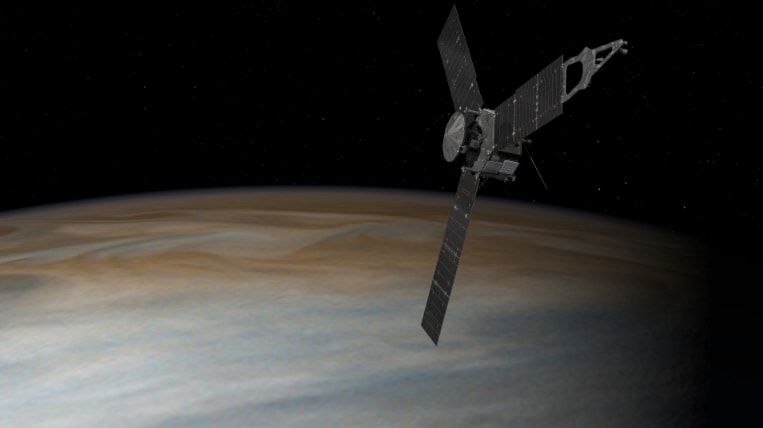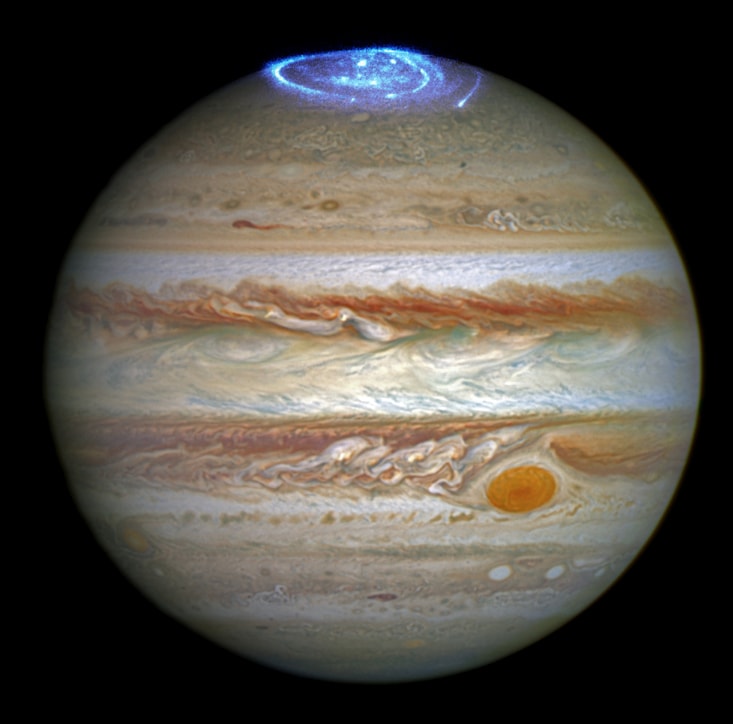Today is Independence Day in the United States, a national holiday full of hot dogs and hamburgers, ice cream and outdoor games, and — above all — fireworks!
Pretty sweet, right? All across the country, cities and towns will be having a competition for the most fantabulous, epic, awe-inspiring fireworks display of the night. But without trying to hurt anyone's ego here, we're pretty sure that we already know what tonight's best fireworks are going to be.
The auroras on Jupiter.
Hey! Other planets don't count, you say? And besides, it's not as though we can see it from here.
Okay, fair enough. I suppose it is cheating a little to include an interplanetary phenomenon only visible in ultraviolet light and through one of the most powerful telescopes known to man. (Ultraviolet light is light that is above the range of what humans can see with the naked eye.) I couldn't really blame you for favouring a fireworks extravaganza that's a little more... local. But Jupiter is about to get much closer than ever before.
Juno visits the Planet of Storms

An artist's impression of Juno orbiting Jupiter. (NASA.gov)
That's because tonight, a NASA probe called Juno is going to enter into orbit around Jupiter, giving scientists an extremely up close look at what makes this famously stormy giant tick. If Juno doesn't really ring a bell, that's understandable. Its arrival tonight comes after being launched nearly five years ago by NASA. But as long as that journey was, its orbit around Jupiter won't be a brief holiday. Its goal is to be Jupiter's newest neighbour for the next 20 months.
And what will it do there? Juno is stockpiled with instruments that will be used to measure the planet's atmosphere and magnetic field in incredible detail. Scientists hope to solve long-standing mysteries about how Jupiter was formed and what it's made of. They also hope to gain insight into its mind-boggling storms. Jupiter is made almost entirely of gas, which means that its super thick atmosphere is a constantly swirling mass of storms. These storms rage for centuries. Regular features like its Great Red Spot are really giant storms that never stop. Have a look.
Think about that for a moment. That's a storm twice the size of Earth! And everything else that you see here are hundreds of smaller storms and swirling clouds twisting in and out of each other. And Juno? It's designed to see through all of that, deep into the planet.
The secrets of the aurora
As if that wasn't impressive enough, Juno will also be examining those auroras. So far, scientists know that the auroras are caused by high energy particles carried by solar wind from the Sun. These particles are drawn magnetically to the planet's (north and south) poles. Here they collide with gases in Jupiter's atmosphere, creating a spectacular ultraviolet light show. Earth has auroras, too, but Jupiter's are far more intense and massive. And they never turn off. The magnetic field that powers them is so strong, it even grabs extra charged particles from elsewhere in space, such as Jupiter's volcanic moon, Io. (Pro tip: don't mess with Jupiter's magnetic field!)
Tricky orbit stage
So, who's pumped for Juno?! Just in case this all sounds like something that you can bet on, the probe still has a couple tests to pass. And the biggest one comes tonight. It needs to successfully enter Jupiter's orbit, which will require a well-timed rocket blast at 9:16pm EST. (This is called Jupiter Orbit Insertion. If it doesn't go well, the probe will simply fly past the planet, meaning the whole mission is over before it begins... bummer.) Next, scientists will spend the next three months calibrating (or matching and setting) Juno's instruments to Jupiter. Only then will rockets be fired again so that Juno can begin properly measuring the planet. Fingers crossed!
Check out this intense trailer to the mission that NASA released, too.
 An incredible recent image from the Hubble Space Telescope shows the aurora on Jupiter's north pole. (NASA.gov)
An incredible recent image from the Hubble Space Telescope shows the aurora on Jupiter's north pole. (NASA.gov)










I hope the scientists do not fail. ❓
Alder, age 7
Great news, Alder! The Juno probe was successfully inserted into Jupiter’s orbit as planned late Monday night. So the mission is right on track.
Thank you for replying. I’m glad the scientists are doing good work!
😯 trailer is intense and scary his going to solve some great mysteries… 😕 😐